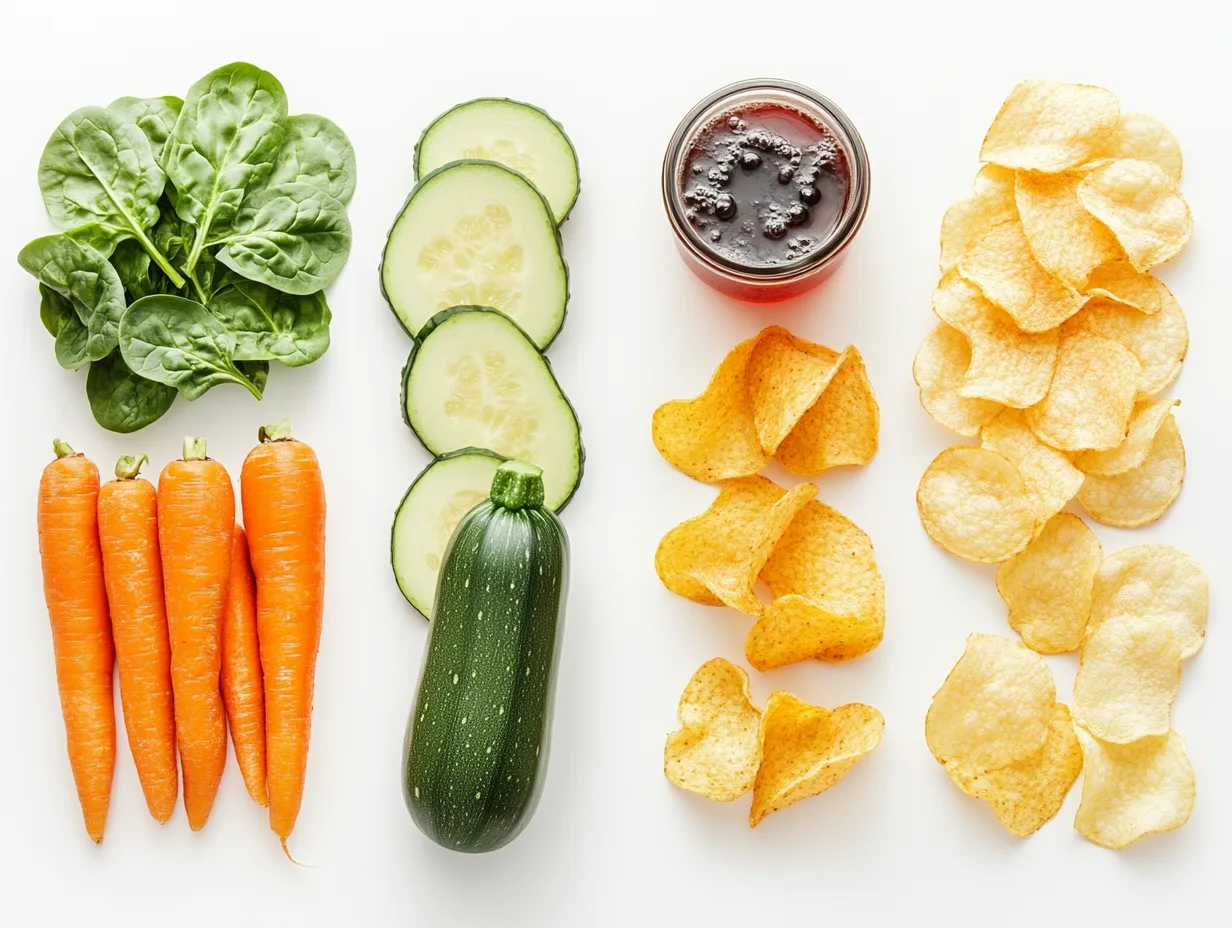A Complete Dietary Guide
Managing diverticulitis effectively involves more than just medical treatment—it requires a strategic approach to your diet. Understanding foods to eat and avoid for diverticulitis is essential for preventing flare-ups, reducing pain, and promoting overall digestive health. This comprehensive dietary guide explores the best and worst foods for diverticulitis, offering practical tips to help you maintain a balanced and gut-friendly diet. Whether you’re newly diagnosed or seeking to refine your current eating habits, this guide provides the insights you need to support your journey toward better health.
Understanding Diverticulitis and Its Dietary Impact
What is Diverticulitis?
Diverticulitis is a condition characterized by the inflammation or infection of diverticula—small pouches that form in the lining of the colon. These pouches develop when weak spots in the colon wall bulge outward, often due to increased pressure from hard stools. When these pouches become inflamed or infected, they can cause significant abdominal pain, fever, and changes in bowel habits. According to the Mayo Clinic, diverticulitis is more common in individuals over the age of 40, but it can affect people of all ages.
The Role of Diet in Diverticulitis Management
Diet plays a pivotal role in both preventing and managing diverticulitis. A well-balanced diet can help reduce the risk of diverticula formation and prevent flare-ups by ensuring smooth bowel movements and minimizing colon pressure. Conversely, certain foods can irritate the colon, exacerbate symptoms, and trigger painful flare-ups. Understanding foods to eat and avoid for diverticulitis empowers you to make informed dietary choices that support your digestive health.
Foods to Eat for Diverticulitis
High-Fiber Foods
Incorporating a high-fiber diet is fundamental in preventing diverticulitis flare-ups. Fiber adds bulk to your stool, making it easier to pass and reducing pressure within the colon.
Top High-Fiber Foods:
- Whole Grains: Brown rice, quinoa, oats, barley, and whole-wheat products.
- Fruits: Apples (with skin), pears, berries, oranges, and bananas.
- Vegetables: Broccoli, carrots, leafy greens, Brussels sprouts, and sweet potatoes.
- Legumes: Lentils, chickpeas, black beans, and kidney beans.
- Nuts and Seeds: Almonds, chia seeds, flaxseeds, and walnuts.
Benefits of High-Fiber Foods:
- Promotes Regular Bowel Movements: Helps prevent constipation, a major risk factor for diverticulitis.
- Reduces Colon Pressure: Lower pressure decreases the likelihood of diverticula formation.
- Supports Gut Health: Fiber acts as a prebiotic, feeding beneficial gut bacteria.
Probiotic-Rich Foods
Probiotics are beneficial bacteria that support a healthy gut microbiome, reducing inflammation and enhancing digestive function.
Probiotic-Rich Foods to Include:
- Yogurt: Choose plain, unsweetened varieties with live active cultures.
- Kefir: A fermented milk drink packed with probiotics.
- Sauerkraut and Kimchi: Fermented vegetables that add beneficial bacteria to your diet.
- Tempeh and Miso: Fermented soy products used in various dishes.
Incorporating Probiotics:
- Add a serving of yogurt or kefir to your breakfast.
- Use sauerkraut or kimchi as a topping for sandwiches or salads.
- Incorporate tempeh into stir-fries or soups.
Lean Proteins
Opting for lean proteins supports overall health without adding unnecessary fat, which can exacerbate inflammation.
Healthy Protein Sources:
- Poultry: Chicken breast and turkey.
- Fish: Salmon, mackerel, and sardines rich in omega-3 fatty acids.
- Plant-Based Proteins: Tofu, tempeh, and legumes.
Healthy Fats
The healthy fats support cell growth and reduce inflammation, which can help manage diverticulitis symptoms.
Sources of Healthy Fats:
- Avocados: Rich in monounsaturated fats and fiber.
- Olive Oil: A heart-healthy oil that can be used in cooking or dressings.
- Nuts and Seeds: Almonds, walnuts, chia seeds, and flaxseeds.
Hydrating Foods and Fluids
Staying well-hydrated is essential when increasing fiber intake to prevent constipation.
Hydrating Foods:
- Cucumbers
- Watermelon
- Oranges
- Lettuce
Recommended Fluids:
- Water: Aim for at least eight 8-ounce glasses daily.
- Herbal Teas: Chamomile, peppermint, and ginger tea can soothe the digestive system.
- Broths: Clear vegetable or chicken broths provide hydration without adding fiber.
Foods to Avoid for Diverticulitis
Low-Fiber Foods
Reducing or eliminating low-fiber foods is crucial to prevent diverticulitis flare-ups.
Low-Fiber Foods to Limit:
- White Bread and Pasta: Made from refined grains lacking fiber.
- White Rice: Similar to white bread and pasta, it lacks the beneficial fiber found in whole grains.
- Processed Snacks: Chips, crackers, and pretzels often contain minimal fiber.
- Canned or Cooked Fruits Without Skin: Lack the fiber present in fresh fruits.
High-Fat and Fried Foods
High-fat and fried foods can increase inflammation and irritate the colon.
Foods to Avoid:
- Fried Foods: French fries, fried chicken, and other deep-fried items.
- Fatty Cuts of Meat: Such as bacon, sausages, and high-fat beef cuts.
- Full-Fat Dairy Products: Whole milk, cream, and full-fat cheeses.
Nuts and Seeds
While nuts and seeds are generally healthy, they can sometimes irritate the colon and contribute to diverticulitis flare-ups.
Caution with:
- Whole Nuts: Almonds, walnuts, and peanuts.
- Seeds: Pumpkin seeds, sunflower seeds, and sesame seeds.
Alternatives:
- Nut Butters: Such as almond or peanut butter, which are easier on the digestive system.
- Chia Seeds: When soaked, they form a gel-like consistency that is gentler on the gut.
Red and Processed Meats
Red and processed meats can increase inflammation and are associated with a higher risk of diverticulitis.
Limit Intake of:
- Red Meats: Beef, pork, and lamb.
- Processed Meats: Hot dogs, salami, and deli meats.
Sugary Foods and Beverages
High sugar intake can lead to inflammation and disrupt gut health.
Avoid:
- Sodas and Sugary Drinks: High in sugar and low in nutritional value.
- Sweets and Desserts: Cakes, cookies, and candies.
Practical Tips for Managing Your Diverticulitis Diet
Gradual Fiber Increase
Introduce fiber into your diet slowly to allow your digestive system to adjust without causing bloating or gas.
Steps to Increase Fiber Gradually:
- Start Small: Add a small portion of high-fiber foods to each meal.
- Monitor Your Body: Pay attention to how your body responds and adjust accordingly.
- Stay Hydrated: Drink plenty of water to help fiber move through your system smoothly.
Balanced Diet Approach
Ensure your diet is balanced, incorporating a variety of nutrients to support overall health.
Balanced Diet Tips:
- Combine Macronutrients: Include a mix of carbohydrates, proteins, and fats in each meal.
- Colorful Plate: Aim for a variety of colorful fruits and vegetables to ensure a range of vitamins and minerals.
- Limit Processed Foods: Focus on whole, unprocessed foods to maximize nutrient intake and minimize inflammation.
Meal Planning and Preparation
Planning your meals in advance can help you adhere to a diverticulitis-friendly diet.
Meal Planning Tips:
- Weekly Menus: Outline your meals for the week, incorporating high-fiber foods and avoiding known triggers.
- Batch Cooking: Prepare large portions of soups, stews, and other fiber-rich dishes that can be easily reheated.
- Healthy Snacks: Keep fiber-rich snacks like fruits, vegetables, and whole-grain crackers on hand to prevent impulsive eating of low-fiber foods.
For more detailed meal planning strategies, explore our Mastering Portion Control article, which provides insights on managing serving sizes and balanced eating.
Consulting a Dietitian
Working with a registered dietitian can help tailor your diet to your specific needs, ensuring you get the right balance of fiber without overloading your digestive system.
Benefits of Consulting a Dietitian:
- Personalized Meal Plans: Customized to fit your lifestyle and dietary preferences.
- Nutritional Guidance: Ensures you meet all your nutrient requirements while managing diverticulitis.
- Support and Accountability: Provides ongoing support to help you stick to your dietary goals.
External Resources and Further Reading
Authoritative Health Sources
- Mayo Clinic on Diverticulitis
- Cleveland Clinic on Diverticulitis Diet
- Harvard Health Publishing on Fiber Intake
Recommended Literature
- Diverticulitis Cookbook by Megan Rush: A comprehensive guide offering a variety of fiber-rich recipes tailored to support digestive health. Diverticulitis Cookbook by Megan Rush
Summary of Foods to Eat and Avoid for Diverticulitis
Effectively managing diverticulitis involves making informed dietary choices that support digestive health and prevent flare-ups. Here are the key takeaways:
- Incorporate High-Fiber Foods: Focus on whole grains, fruits, vegetables, legumes, nuts, and seeds to promote regular bowel movements and reduce colon pressure.
- Include Probiotic-Rich Foods: Enhance your gut microbiome with yogurt, kefir, sauerkraut, and other fermented foods to support a healthy digestive system.
- Choose Lean Proteins and Healthy Fats: Opt for lean meats, fish, and plant-based proteins, along with sources of healthy fats like avocados and olive oil.
- Avoid Low-Fiber and Irritating Foods: Limit intake of processed foods, high-fat meats, sugary snacks, and foods that may irritate the colon, such as whole nuts and seeds.
- Stay Hydrated: Drink plenty of water and include hydrating foods to help fiber function effectively and prevent constipation.
- Plan and Prepare Meals: Organize your meals to include a variety of high-fiber foods while avoiding known triggers.
- Consult a Dietitian: Seek professional guidance to create a personalized dietary plan that meets your specific needs and supports diverticulitis management.
- Monitor and Adjust: Keep track of your food intake and symptoms to identify patterns and make necessary dietary adjustments.
By integrating these dietary strategies, you can effectively manage diverticulitis, reduce the risk of flare-ups, and maintain a healthier, more comfortable digestive system.


Leave a Reply